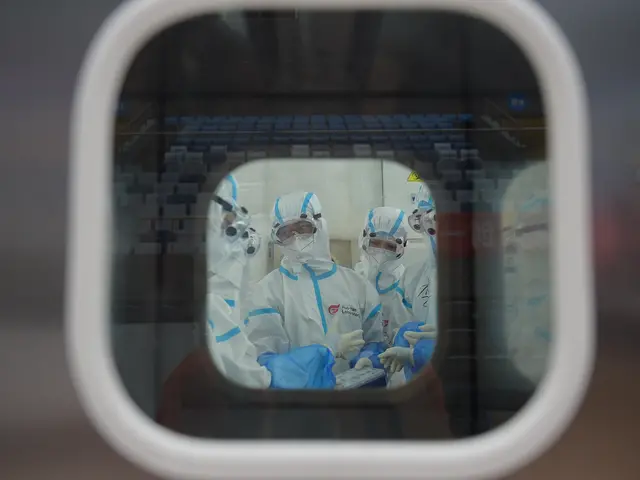A COVID-19 testing lab built with an air-inflated structure went into trial operation on Monday at a sports venue in a southern district of Beijing to address the city's rising demand for nucleic acid tests after a cluster of infections were confirmed recently.
The mobile Huoyan (Fire Eye) laboratory was built in two days over the weekend in Daxing District to accommodate 14 automated COVID-19 testing machines provided by Chinese biotech company BGI Genomics based in the city of Shenzhen, south China's Guangdong Province.
Yin Ye, CEO of BGI, said the lab has nine air-inflated film chambers each 70 square meters in size, with three as sample receiving areas and the other six for accommodating the equipment. The lab can cope with 10,000 nucleic acid tests a day once in full operation.
Beijing has launched a citywide campaign to locate and test individuals who visited the Xinfadi wholesale market, the site most of the city's confirmed cases are related to, since May 30.
Beijing reported nine newly confirmed domestically transmitted COVID-19 cases, two suspected cases and five asymptomatic cases Sunday, the municipal health commission said Monday.
From June 11 to 21, Beijing reported 236 confirmed domestically transmitted cases, all of whom were receiving treatment in designated hospitals.
Meanwhile, there were 22 asymptomatic cases still under medical observation and one imported case hospitalized in Beijing, the commission said.
As of Saturday, nearly 2.3 million people in the city had been sampled for nucleic acid tests, according to local authorities.
In Chinese folklore, piercing fire eyes enable Monkey King to see through all deceits of monsters. The Fire Eye labs developed by BGI, taking the name, have been used worldwide for large-scale nucleic acid testing without manual intervention.
According to BGI, the company has built eight air-inflated Fire Eye labs worldwide. The first one in China was put into use in Harbin, capital of northeast China's Heilongjiang Province, in May.
The independent chambers of the makeshift labs are each equipped with a medical waste disposal outlet and dressing room. Medical workers can submit samples for testing through the window without contacting those working inside the lab.
 简体中文
简体中文

